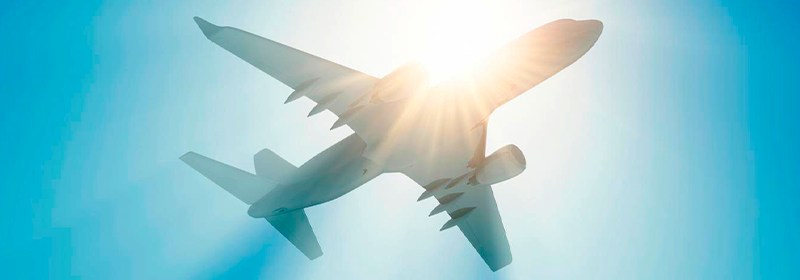- In recent years, Indra has increased the continent's air traffic management capabilities: two out of every three control centers now use the company's state-of-the-art systems
- The modernization of Peru's air surveillance network enhances traffic flow in the region and improves connectivity to international destinations
- Indra is leading the digitalization of air traffic and introducing technologies that will completely transform the way the world flies

Indra, one of the leading global technology and consulting companies and the company that has modernized the air traffic network throughout Latin America, has taken a new step forward to place the region at the forefront of air traffic management by digitalizing Peru's air surveillance network, key to ensuring the seamless management of flights throughout the continent.
In recent years, the company has modernized the air traffic systems of 25 Latin American countries. Two out of every three control centers on the continent, including the one in Lima, Peru's main control center, now manage traffic using Indra systems, which enhances interoperability and enables much smoother traffic. “Indra's technologies are helping top navigation service providers manage more flights, in a much safer and more environmentally friendly way,” the company spokesperson explains.
The company has now equipped Peru’s eight air safety stations with the most advanced digital features, which increase the accuracy and quality of the data collected and expand their coverage. According to sources at Indra, “Increasing safety allows us to optimize routes, manage more flights and save costs. Unnecessary emissions are also reduced.”
The radars operate in tandem with new ADS-B systems, antennas that collect automated position information from aircraft. “Again, accuracy is gained by combining data collected by radar with data collected by other means,” they explain.
Improved service helps bolster air transportation, tourism and Peru's economy. It makes it possible to attract more airlines and allows them to establish new routes, while at the same time contributing to the improvement of air traffic throughout the continent. “The improvements in the air traffic network infrastructure create a ripple effect that is felt throughout the region and even in international operations with other continents,” sources at Indra say.
The digitalization of the radars also makes it possible for the maintenance of the surveillance station network to be carried out entirely remotely, as the network’s operations can be constantly and centrally monitored. This saves operating costs and enhances safety.
Precisely in order to prioritize the latter, last year Indra delivered a state-of-the-art transportable radar (MSSR-S) to Peru that can be deployed in a few hours to support air surveillance wherever needed. This system, with a range of 550 kilometers (approximately 300 nautical miles) made it possible, for example, to upgrade the Lima airport radar without affecting air operations.
With the modernization of this critical element of infrastructure, Peru incorporates the latest standards recommended globally by the International Civil Aviation Organization (ICAO) and becomes one of the first countries to fulfill regional commitments agreed upon with the organization.
Indra, leader in air traffic digitalization
Air navigation service providers are immersed in a process of profound system transformation and digitalization in order to meet the challenges that lie ahead. The need to manage an increasing amount of traffic, and to do so in a cleaner and safer way and at more competitive costs, is forcing them to incorporate a wide range of next-generation technologies such as artificial intelligence, cloud computing, digital IP communications, virtualization, and cybersecurity.
Indra is the leading company driving this change in Europe and the world. The company was selected earlier this year by Eurocontrol, Europe's main air navigation agency, to tackle the digital transformation of the management of the European air navigation network. This network facilitates the coordination of air operations in over 500 airports and is involved in the management of 11 million flights a year. Indra's digitalization of Eurocontrol's operational systems will allow for more accurate flight operations planning, which in turn will increase punctuality and safety, enhance capacity to manage more air traffic in Europe, and improve sustainability. This is a contract worth 173 million euros that Indra won in competition with the world's leading air traffic companies.
But this is just one of the major projects Indra is working on. Together with ENAIRE, the company has created Startical, which will launch a constellation of over 200 satellites to offer navigation service providers around the world the possibility of having air surveillance and communications services directly from space. In Spain, it is also deploying one of the first and most advanced nationwide unmanned air traffic control (UTM) networks which will facilitate drone traffic at low altitude and open the door for these aircraft to start providing all kinds of services on a massive scale.
Indra is also a pioneer in the deployment of remote control towers at airports, is moving air traffic systems to the cloud, and has successfully tested systems that will allow air traffic management to be delegated among control centers, something that is not possible now but will be in just a few years, greatly enhancing the safety and resilience of air traffic worldwide.
About Indra
Indra (www.indracompany.com) is one of the leading global technology and consulting companies and the technological partner for the core business operations of its customers world-wide. It is a world leader in providing proprietary solutions in specific segments in Transport and Defence markets, and the leading firm in Digital Transformation Consultancy and Information Technologies in Spain and Latin America through its affiliate Minsait. Its business model is based on a comprehensive range of proprietary products, with a high-value end-to-end focus and with a high innovation component. In the 2020 financial year, Indra achieved revenue totaling 3.043 billion euros and had nearly 48,000 employees, a local presence in 46 countries and business operations in over 140 countries.